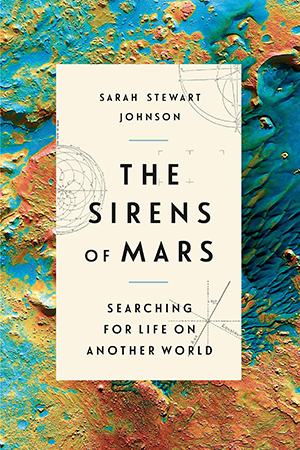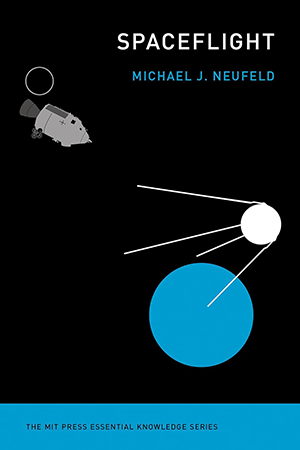
Library
Space
Wade Roush
Extraterrestrials
Are we alone in the universe? If not, where is everybody? An engaging exploration of one of the most important unsolved problems in science. Everything we know about how planets form and how life arises suggests that human civilization on Earth should not be unique. We ought to see abundant evidence of extraterrestrial activity—but we don't. Where is everybody? In this volume in the MIT Press Essential Knowledge series, science and technology writer Wade Roush examines one of the great unsolved problems in science: is there life, intelligent or otherwise, on other planets? This paradox (they're bound to be out there; but where are they?), first formulated by the famed physicist Enrico Fermi, has fueled decades of debate, speculation, and, lately, some actual science. Roush lays out the problem in its historical and modern-day context and summarizes the latest thinking among astronomers and astrobiologists. He describes the long history of speculation about aliens (we've been debating the idea for thousands of years); the emergence of SETI (the Search for Extraterrestrial Intelligence) as a scientific discipline in the 1960s, and scientists' use of radio and optical techniques to scan for signals; and developments in astrobiology (the study of how life might arise in non-Earth like environments) and exoplanet research (the discovery of planets outside our solar system). Finally, he discusses possible solutions to the Fermi Paradox and suggests way to refocus SETI work that might increase the chances of resolving the paradox—and finding extraterrestrials.

Sarah Stewart Johnson
The Sirens of Mars
Mars was once similar to Earth, but today there are no rivers, no lakes, no oceans. Coated in red dust, the terrain is bewilderingly empty. And yet multiple spacecraft are circling Mars, sweeping over Terra Sabaea, Syrtis Major, the dunes of Elysium, and Mare Sirenum—on the brink, perhaps, of a staggering find, one that would inspire humankind as much as any discovery in the history of modern science. In this beautifully observed, deeply personal book, Georgetown scientist Sarah Stewart Johnson tells the story of how she and other researchers have scoured Mars for signs of life, transforming the planet from a distant point of light into a world of its own. Johnson’s fascination with Mars began as a child in Kentucky, turning over rocks with her father and looking at planets in the night sky. She now conducts fieldwork in some of Earth’s most hostile environments, such as the Dry Valleys of Antarctica and the salt flats of Western Australia, developing methods for detecting life on other worlds. Here, with poetic precision, she interlaces her own personal journey—as a female scientist and a mother—with tales of other seekers, from Percival Lowell, who was convinced that a utopian society existed on Mars, to Audouin Dollfus, who tried to carry out astronomical observations from a stratospheric balloon. In the process, she shows how the story of Mars is also a story about Earth: This other world has been our mirror, our foil, a telltale reflection of our own anxieties and yearnings. Empathetic and evocative, The Sirens of Mars offers an unlikely natural history of a place where no human has ever set foot, while providing a vivid portrait of our quest to defy our isolation in the cosmos.

Michael J. Neufeld
Spaceflight: A Concise History
A concise history of spaceflight, from military rocketry through Sputnik, Apollo, robots in space, space culture, and human spaceflight today. Spaceflight is one of the greatest human achievements of the twentieth century. The Soviets launched Sputnik, the first satellite, in 1957; less than twelve years later, the American Apollo astronauts landed on the Moon. In this volume of the MIT Press Essential Knowledge series, Michael Neufeld offers a concise history of spaceflight, mapping the full spectrum of activities that humans have developed in space. Neufeld explains that “the space program” should not be equated only with human spaceflight. Since the 1960s, unmanned military and commercial spacecraft have been orbiting near the Earth, and robotic deep-space explorers have sent back stunning images of faraway planets. Neufeld begins with the origins of space ideas and the discovery that rocketry could be used for spaceflight. He then discusses the Soviet-U.S. Cold War space race and reminds us that NASA resisted adding female astronauts even after the Soviets sent the first female cosmonaut into orbit. He analyzes the two rationales for the Apollo program: prestige and scientific discovery (this last something of an afterthought). He describes the internationalization and privatization of human spaceflight after the Cold War, the cultural influence of space science fiction, including Star Trek and Star Wars, space tourism for the ultra-rich, and the popular desire to go into space. Whether we become a multiplanet species, as some predict, or continue to call Earth home, this book offers a useful primer.
